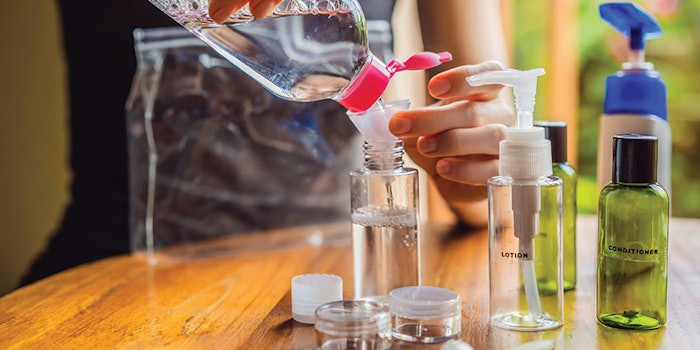
Read this and other articles similar to this in the September 2020 digital edition. . .
The U.S. Food and Drug Administration (FDA) recently heightened measures to prevent toxic methanol-containing hand sanitizers from reaching the U.S. by initiating an import alert. Previous moves included issuing warning letters to offending companies; expanding the growing list of red-flagged products (148 entries and counting, at press); and cautioning consumers and health care professionals directly about affected products.
Why are these products slipping through the cracks? Perhaps because in order to speed product supply to the public in crisis, the FDA temporarily allowed the formulation of sanitizers by non-regulated firms so long as their products strictly adhere to approved formulas.
But, according to the old adage, “no good deed goes unpunished,” some companies have strayed from the approved formulae (knowingly or not), which has put the public’s health at risk. In this excerpt, adapted from a longer interview, Cosmetics & Toiletries (C&T) asked authors Bob Lochhead (BL), Ph.D., and Margaret Lochhead, to weigh in on this temporary allowance and discuss why formulators shouldn’t take liberties.
C&T: Can formulators simply make their own sanitizers based on WHO formulas and take them to market?
BL: The FDA has temporarily allowed formulators to make hand sanitizers so long as they follow the WHO [World Health Organization] approved formulas. The reason is, the FDA wants to make sure that anything that comes out is safe and efficacious.
Now, from a formulator’s standpoint, I look at the WHO formula and say there’s something wrong with this formula. Why would you put peroxide and alcohol and glycerin in the same bottle? You know peroxide’s going to react; in fact, if it reacts with cetyl alcohol it will turn into diethyl ether.
The thing is, at least it is a common WHO formula. What you didn’t want is people using either alcohol at too low a concentration, the wrong kind of alcohol, the wrong kind of material—even the wrong kind of labeling, and perhaps no denaturant in the alcohol so that kids get a hold of it and drink it. The other thing is, when the FDA is giving a temporary rule, you can’t say it’s carte blanche, just go ahead and make the stuff [as you see fit]. What the FDA did was very conscious of public safety and product efficacy, so the agency limited its temporary allowance to the WHO formulae.
[And now there’s rising concern over methanol]. Methanol is highly toxic. If it doesn’t kill you, it can give you permanent brain damage and neurological damage. That’s why the FDA made the rule; in fact, it was impressive the way the agency moved very fast to put in temporary rules to protect us, especially from methanol.










